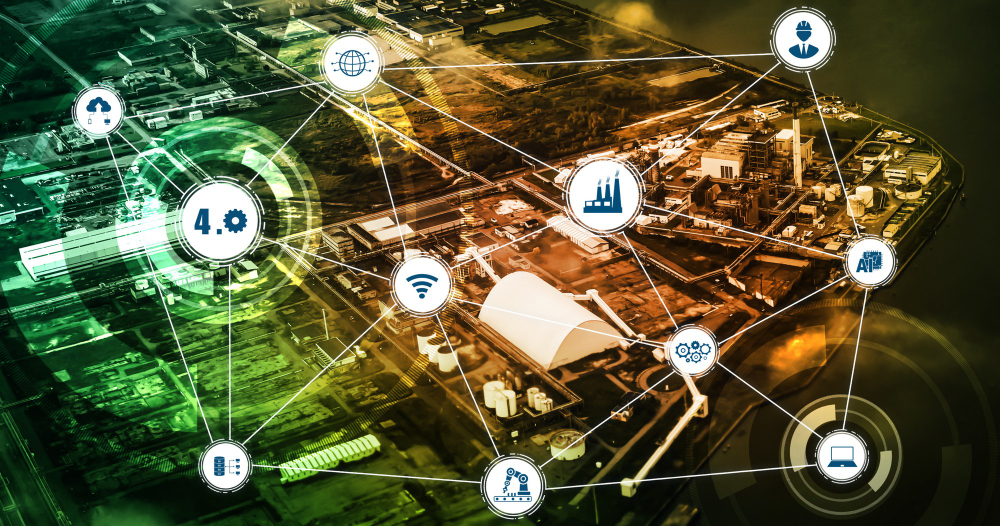Power Electronics and Conversion Strategies for Multiple Source Integration

The “Energy Fusion Core” system, by its nature, relies on a cascade of sophisticated power electronic conversion stages to interface with diverse energy sources and deliver regulated power to electric vehicles. The efficiency, reliability, and control complexity of these stages are paramount to the system’s overall performance. Table 2 presents a comparison of potential power conversion topologies relevant to the EFC_X1 and input stages.
Table 2: Comparison of Potential Power Conversion Topologies for EFC_X1 and Input Stages
System Block | Potential Topology | Key Characteristics (Efficiency, Complexity, Cost, Bidirectionality) | Advantages | Disadvantages | Relevant Research (Mention for Battery Charging) |
U1_GRID_PROC (AC-DC Grid Input) | Diode Bridge Boost PFC | Medium efficiency, medium complexity, low cost, unidirectional. | Simple control for PFC. | High THD without active shaping. |
|
| Vienna Rectifier | High efficiency, higher complexity, medium cost, unidirectional. | Low THD, high PF, fewer active switches per phase. | More complex control than simple rectifier. |
|
| ZVS Interleaved Boost PFC | Very high efficiency, high complexity, higher cost, unidirectional (can be made bidirectional). | Near unity PF, soft switching (lower losses), good for high power. | Most complex control, more components. |
|
| Bidirectional PWM Rectifier (e.g., for V2G) | High efficiency, high complexity, higher cost, bidirectional. | Enables V2G, grid support services, excellent power quality. | Most complex control, highest component stress. |
|
U2_SOLAR_MPPT (DC-DC Solar) | Boost Converter (MPPT) | High efficiency, medium complexity, low cost, unidirectional. | Simple, effective for boosting PV voltage. | Limited to step-up; requires output voltage ripple filtering. |
|
| Buck-Boost Converter (MPPT) | Medium-high efficiency, medium complexity, medium cost, unidirectional. | Can step-up or step-down voltage, wide MPPT range. | Potentially higher stress on passive components, may be non-isolated. |
|
U3_TURB_PROC (DC-DC Turbine) | Rectifier + Boost/Buck-Boost Converter | Efficiency varies, medium-high complexity, medium cost, unidirectional. | Adaptive to variable turbine output (AC or DC) for stable DC bus. | Multi-stage conversion can reduce overall efficiency. |
|
EFC_X1 (Central Core) | Managed Common DC Bus | System efficiency depends on peripheral converters, complexity in central control, cost varies with bus components and control. | Simplifies source/load integration, modular. | Requires robust control for power sharing; single point of failure if bus components fail. |
|
| Multi-Input Multi-Output (MIMO) DC-DC Converter | Potentially high efficiency, very high complexity, high cost. Bidirectionality depends on specific conversion stages, optimized power flow within the MIMO topology. | Centralized energy management, potential for reduced overall component count. | Highly complex control algorithms, high component count within MIMO unit, specific design application-dependent. |
|
U_EV_CTRLX Power Stage (DC-DC EV Output) | Isolated Buck/Buck-Boost Converter | High efficiency, safety isolation, medium-high complexity, medium cost, typically unidirectional (can be bidirectional for V2G). | Provides wide output voltage/current range for EV batteries. | Isolation transformer adds size/weight. | (Relevant for battery charging) |
| Resonant Converter (e.g., LLC) | Very high efficiency, high complexity, higher cost, typically unidirectional. | Soft switching, high efficiency at specific load points. | Sensitive to load variations, complex control. | (Relevant for battery charging) |
AC-DC Conversion for Grid Input (U1_GRID_PROC): Interfacing with the AC grid, U1_GRID_PROC, is the first critical conversion stage. For a high-power system like the EFC, simple diode bridge rectifiers are insufficient due to poor power factor and high harmonic current injection. Advanced active rectifier topologies are necessary. Options include Vienna rectifiers, known for their ability to achieve low Total Harmonic Distortion (THD) with a three-level structure and fewer active switches per phase, or various Pulse Width Modulated (PWM) boost rectifiers, such as Zero Voltage Switching (ZVS) interleaved boost PFC converters, which can provide very high efficiency and near-unity power factor. The primary objectives of this stage are efficient AC-to-DC conversion and rigorous Power Factor Correction (PFC). PFC is essential not only for compliance with utility grid codes but also for maximizing the actual power drawn from the AC source and minimizing losses in the distribution network. Active PFC techniques integrated into the rectifier topology are standard for such applications. If the EFC system is designed to support Vehicle-to-Grid (V2G) operation or provide ancillary services to the grid, this AC-DC stage must be bidirectional, allowing power flow from the DC bus back to the AC grid. This significantly increases complexity, requiring fully controllable bidirectional converters.
DC-DC Conversion for Renewable Inputs (U2_SOLAR_MPPT, U3_TURB_PROC) and EFC_X1:
- Solar Input (U2_SOLAR_MPPT): The U2_SOLAR_MPPT unit will incorporate a DC-DC converter (typically a boost or buck-boost topology) controlled by an MPPT algorithm. These algorithms, such as Perturb & Observe (P&O) or Incremental Conductance, dynamically adjust the solar array’s operating voltage to ensure it operates at its maximum power output under varying solar irradiation and temperature conditions, thereby maximizing energy harvesting. The output of this stage is a regulated DC voltage suitable for feeding into the EFC_X1.
- Turbine Input (U3_TURB_PROC): Power conditioning for turbine inputs is more varied depending on the type of turbine.
- Wind turbines often generate variable-frequency, variable-voltage AC. This requires an initial AC-DC rectification stage (often integrated within the turbine nacelle or as part of U3_TURB_PROC). After rectification, a DC-DC converter is employed to stabilize the voltage and control power flow to the EFC_X1. For instance, Type 4 wind turbines use full-power converters (AC-DC and then DC-AC for grid connection, or AC-DC to a DC bus for a system like EFC). For integration into DC microgrids, small wind turbines might utilize Permanent Magnet Brushless DC (PMBLDC) generators coupled with boost converters.
- Micro-hydro turbines also require specific power conditioning. Depending on the generator (e.g., Permanent Magnet Synchronous Generator PMSG), this typically involves a rectifier followed by a DC-DC converter to regulate the output for the common DC bus. MPPT algorithms may also be employed if the hydro source has variable flow characteristics.
- Role of “Energy Fusion Core” (EFC_X1) as a Multi-Input DC Hub or MIMO Converter: The EFC_X1 is the centerpiece of the power conversion strategy.
- DC Hub Architecture: One interpretation is that the EFC_X1 acts as an intelligent, common DC distribution bus. Conditioned DC power from the grid, solar, and turbine inputs aggregates onto this bus. Energy for EV charging is then drawn from this bus by individual DC-DC converters within or associated with each U_EV_CTRLx module. This architecture is common in DC microgrid designs and exemplified by research efforts like NREL’s eCHIP platform, which focuses on DC-coupled high-power charging hubs. Such a DC bus can simplify the integration of multiple DC sources and loads and potentially improve overall system efficiency by reducing redundant conversion stages.
- MIMO Converter Architecture: A more advanced interpretation, supported by the “Dynamic Synthesizer” label, is that the EFC_X1 itself is a sophisticated Multi-Input Multi-Output (MIMO) DC-DC converter. MIMO converters are designed to simultaneously interface multiple power sources with multiple loads, providing centralized control over power flow and optimizing energy transfer with potentially fewer discrete conversion stages compared to a common bus with many individual converters. Research on MIMO converters for renewable energy systems and EV applications highlights their potential for flexible energy management and improved efficiency.
Power Distribution to EV Charging Docks (from EFC_X1 via U_EV_CTRLx to J_DOCKX_OUT): The final power conversion stage involves delivering appropriate DC power to the EVs.
- DC Bus Voltage: The “Direct Charging DC Bus” cited from the EFC_X1 would operate at a specific high DC voltage (e.g., 800V or 950V, as seen in systems like eCHIP). This voltage level is chosen to efficiently support high-power DC fast charging and minimize I²R losses in the distribution bus.
- High-Power DC-DC Converter for Charging: Each U_EV_CTRLx module, or an associated dedicated power stage, will incorporate a high-power DC-DC converter. This converter takes the DC bus voltage as input and precisely regulates the output voltage and current according to the requirements of the connected EV’s battery. EV battery voltages can vary widely (typically from around 200V to up to 1000V for newer models). Common topologies for this stage include isolated buck or buck-boost converters, and for very high powers, resonant converters or multi-level converters might be employed to achieve superior efficiency and power density. Multi-port charger designs aim to reduce component count and cost by sharing some converter stages.
- Dynamic Power Distribution: The system inherently implies dynamic power sharing capabilities. The EFC_X1, under the direction of the U_MCU_SYS_CTRL, would allocate the total available power among the active charging docks. This is a common feature of commercial multi-outlet chargers, allowing flexible utilization of the station’s capacity based on the number of EVs charging and their individual power demands.
The architectural choice for EFC_X1—a managed DC bus or a complex MIMO converter—is a fundamental design decision with profound implications. A managed DC bus might offer more modularity and rely on the intelligence of individual input conditioning and output EV charger converters. In contrast, a highly integrated MIMO converter within the EFC_X1 could centralize most of the power management intelligence, potentially leading to a more compact and efficient core system but with significantly increased control complexity. The performance of the EFC_X1, regardless of its specific internal topology, will be a critical determinant of the entire system’s efficiency, responsiveness, and cost. A poorly optimized EFC_X1 could become a major source of power loss or a dynamic bottleneck, diminishing the benefits of the multi-source input strategy.
Furthermore, the integration of three heterogeneous power sources (stable grid AC, variable solar DC, and potentially erratic turbine DC) into a common EFC_X1 presents considerable challenges. These challenges relate to ensuring voltage compatibility across sources, matching their dynamic responses to load changes, and robust fault isolation. For instance, rapid power fluctuations from a wind turbine, if not adequately damped and controlled by its dedicated power conditioner (U3_TURB_PROC) and the EFC_X1, could destabilize the DC bus. Such instability could adversely affect other connected input sources or disrupt the EV charging process. This necessitates highly sophisticated, fast-acting control algorithms within each power conditioning unit and, crucially, within the EFC_X1 and the overarching U_MCU_SYS_CTRL. These controls must go beyond simple power summation, actively managing interactions and ensuring stability, which is a known challenge in DC hub systems.
Team
Our Driving Force - Our Dedicated Team
The success of “Shead Green Mobility and Renewable Technology OPC” is rooted in the collective efforts of a group of talented, enthusiastic, and dedicated individuals. Each member of our team is experienced in their respective fields and deeply committed to the company’s goals and philosophy. Besides the founder, our team includes technologists, engineers, marketing experts, and skilled managers who are working tirelessly to turn this green mobility revolution into reality.

MD Mohiminul Islam Shead
He is the hero behind "Shead Green Mobility and Renewable Technology private limited company"

Professor Dr. Md. Nurul Amin
Professor Dr. Md. Nurul Amin stands as a pivotal figure and visionary co-founder of Shead Green Mobility and Renewable Technology OPC (SMRT)

